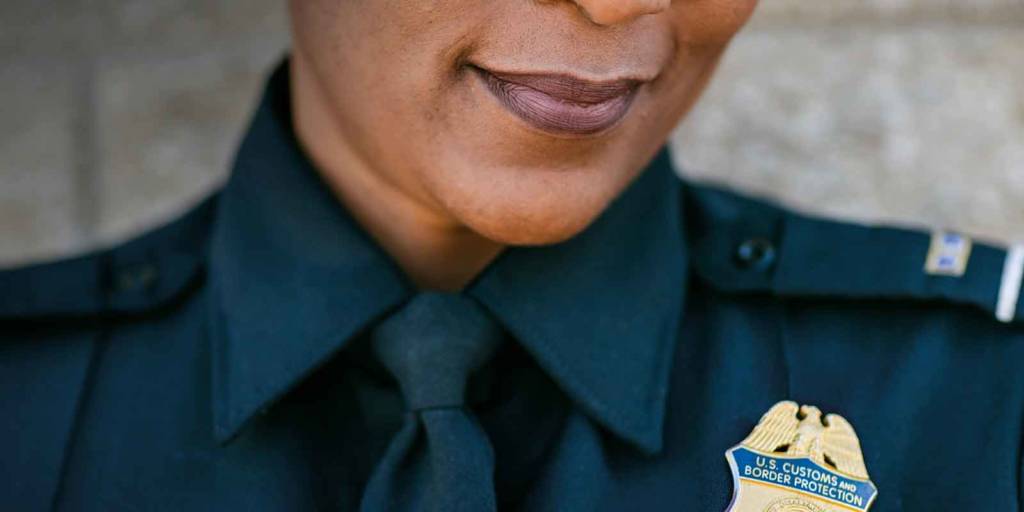–Updated for 2021–
Law enforcement in the 21st century is evolving rapidly, as police face new threats and challenges along with increased scrutiny from the public and the media. The law enforcement profession is responding with significant changes in the areas of leadership, structure, culture, policy and technology.
Today, the majority of departments and agencies are:
- Adapting to new levels of transparency that were nonexistent a decade ago
- Adopting new policies to promote improved police-community relations
- Deploying new technologies that help police do their jobs, while also changing the way they interact with the community
- Developing a deeper understanding of the connection between education and enforcement
Here are 7 top trends currently shaping the law enforcement field:
Trend 1: Focus on Community Oriented Policing
Community oriented policing is, of course, not a new concept or practice. However, in the wake of highly publicized use-of-force complaints and the resulting public distrust, it is considered by many in law enforcement to be more relevant and necessary than ever before.
According to the Department of Justice, which launched its Office of Community Oriented Policing Services (COPS) back in 1994, “Community policing begins with a commitment to building trust and mutual respect between police and communities. It is critical to public safety, ensuring that all stakeholders work together to address our nation’s crime challenges. When police and communities collaborate, they more effectively address underlying issues, change negative behavioral patterns and allocate resources.”
With nationwide attention on the issue of community policing, most agencies have already begun successfully implementing these tactics and strategies to work more harmoniously with their local communities. And it is predicted that this focus on community policing will continue for the foreseeable future, as it remains a top priority at the local, state and federal levels.
According to the IACP’s discoverpolicing.org website, community policing “involves three components: developing community partnerships, engaging in problem solving and implementing community policing organizational features.”
For law enforcement professionals, improving their relationship with the community is no small task. But when equipped with knowledge about community oriented policing strategies, many departments are seeing an improvement in the public’s perception of police.
[RELATED] The Path to Community Policing Through Leadership >>
Trend 2: Increasing Use of Technology & Tools
Technology is making it much easier for police professionals to ensure public safety and security — freeing up resources and enabling proactive policing, while at the same time creating a new level of transparency. Here is a closer look at some of the technological trends at the forefront of modern policing:
- Social media is being used more frequently and with greater sophistication and adoption to gather and disseminate information, as well as engage the community.
- Body worn cameras are required at most agencies as they have been shown to offer greater transparency and even decrease use-of-force-related complaints. However, issues such as cost, privacy, data retention, public disclosure and overall effectiveness continue to be areas of debate.
- Facial recognition software is ideally used in remote surveillance as its accuracy and sophistication increases. However, there has been some controversy surrounding facial recognition and potential racial biases. In the wake of these issues, biometric privacy laws will be a hot topic as this type of technology becomes more mainstream.
- Predictive policing – Artificial intelligence offers a fundamental shift in how police operate, moving from reactive policing to proactive policing. This is made possible through advanced analytics and intervention models, which can essentially “forecast” crime — AI systems can proactively scan troves of information to provide accurate crime forecasting using predictive analytics, which can help agencies proactively police before a crime occurs.
- GPS applications are being used by law enforcement to track and locate suspects and parolees faster. GPS bullets, for example, can be shot into a vehicle in order to remotely track its movements and GPS tracking devices can be used on repeat offenders to monitor their location.
- Next generation 911 will be able to receive text messages, videos and photographs. The technology is currently available, but its adoption will take time as agencies work to educate the public both about the availability and viability of these 911 capabilities.
- Robotics utilization in police work continues to expand. For example, small dumbbell- or tank-shaped robots equipped with sensors are being used to infiltrate spaces where it is not safe for officers to enter, and then send back an audio and video feed to incident command. Increasingly sophisticated bomb disposal robots are also aiding officer safety by handling dangerous tasks involving explosives.
- Drones are aiding in surveillance, as departments find new uses for unmanned aerial vehicles fitted with optical, zoom and/or thermal cameras. Search and rescue, active shooter situations and crowd monitoring are among notable examples.
- Intelligence-led policing combines problem-solving, policing, information sharing and police accountability with enhanced intelligence operations and data to inform policing efforts that focus on most-likely scenarios and situations.
[RELATED] What Law Enforcement Leaders Should Know About Intelligence-Led Policing (ILP) >>
Trend 3: Prioritizing Officer Health & Wellness
Law enforcement officers put their bodies, and their minds, through a lot of stress and strain on the job. And while there has historically been a “tough it out” attitude, today’s agencies and departments are making officer health and wellness a high priority.
In terms of physical health, law enforcement officers are particularly susceptible to hypertension, obesity, diabetes and heart attacks. This has prompted agencies to encourage their officers to get proactive when it comes to their health, particularly cardiovascular health. Some agencies even offer incentives for officers scoring at a certain level on standardized fitness tests.
Mental health is also now a top priority for police officer wellness. As anyone knows, law enforcement is an extremely stressful occupation, and the rate of depression, anxiety, PTSD and even suicide has been on the rise. This has made mental wellness initiatives also a top priority for the law enforcement community.
Trend 4: Expanding Opportunities for Women in Law Enforcement
Women have traditionally made up a very small percentage of sworn law enforcement professionals, but those numbers are gradually growing (approximately 13% nationally, up from just 3% in the 1970s). To combat that, police agencies nationwide have signed a pledge to recruit classes of at least 30% women by 2030. Known as the 30×30 initiative, this program aims to not only increase the number of women in law enforcement, but it also “aims to ensure police policies and culture intentionally support the success of qualified women officers throughout their career.” In recent years, the need to recruit, train and promote more female officers is receiving far more attention than ever before for several important reasons.
First, studies show that female officers are highly regarded for their skills in conflict resolution, communication, problem solving and cooperation with community members, and often receive better evaluations than their male counterparts in these key areas. Statistics show that they are also less likely to use excessive or deadly force.
Beyond those important benefits, studies show that female officers excel in the following areas when compared to male officers:
- Named in fewer complaints and lawsuits
- Perceived by communities as being more honest and compassionate
- See better outcomes for crime victims, especially in sexual assault cases
- Make fewer discretionary arrests, especially of non-white residents
[RELATED] Women in Law Enforcement — Time of Expanding Opportunity >>
Trend 5: The Fast-Growing Threat of Cyber Crime
The threat of cyber crime is massive and growing. In fact, the FBI and Internet Crime Complaint Center’s (IC3) 2020 Internet Crime Report revealed that complaints of cyber crime nearly doubled from 2019, hitting a record total of 791,790 (up from about 467,000). And local police departments across the nation are often not equipped with the specialized knowledge and technology needed to address high-tech crime, which poses an increasing risk to individuals, corporations and government agencies. However, given the proliferation of cyber crimes, agencies across the country have had to step up their efforts to combat online threats.
For example, Nick Selby, Director of Cyber Intelligence for the NYPD, developed a mobile app that will help their patrol officers conduct interviews with victims of cyber crimes. This app can guide officers through interviews with cyber crime victims to make sure they get the right technical details. These details are important in helping cyber crime experts investigate and potentially identify the perpetrator.
Trend 6: Focus on Police Accountability
There is a growing push for greater accountability from law enforcement agencies. Local politicians have demanded new accountability measures, which has raised important discussions about how law enforcement agencies can provide more transparency and accountability to their communities without sacrificing privacy or public safety.
This has prompted many law enforcement leaders to make police accountability a cornerstone of their leadership styles. By building a culture of accountability within their agencies, police leaders are highlighting its importance and demonstrating to subordinates that they are expected to carry out their duties with integrity. Having this system of accountability in place also gives officers a sense of security and support, as they clearly understand the expectations placed on them and their colleagues.
Trend 7: A New Generation of Police Leaders
Law enforcement recruitment and retention is down, exacerbated by increasing anti-police sentiment and relatively low starting compensation in comparison to many other (less dangerous) fields. This, paired with a growing number of baby boomers retiring from police careers, is creating many open positions on patrol and in leadership throughout law enforcement agencies.
This new generation of police leaders is bringing different perspectives and life experiences that translate into different leadership styles. Many of today’s leaders are moving from the authoritative style that has largely dominated law enforcement to a more inclusive approach that seeks to enable and empower rather than simply command.
Important 21st century police leadership competencies include analytical and problem-solving skills, the ability to think critically and resolve conflict, an understanding of public safety law, awareness of budget/fiscal issues and the ability to effectively communicate with a wide array of people, from subordinates to community leaders and the media. This is a significant departure from police leaders of past generations, when technology, data analysis and budgeting had little to do with running a law enforcement department.





